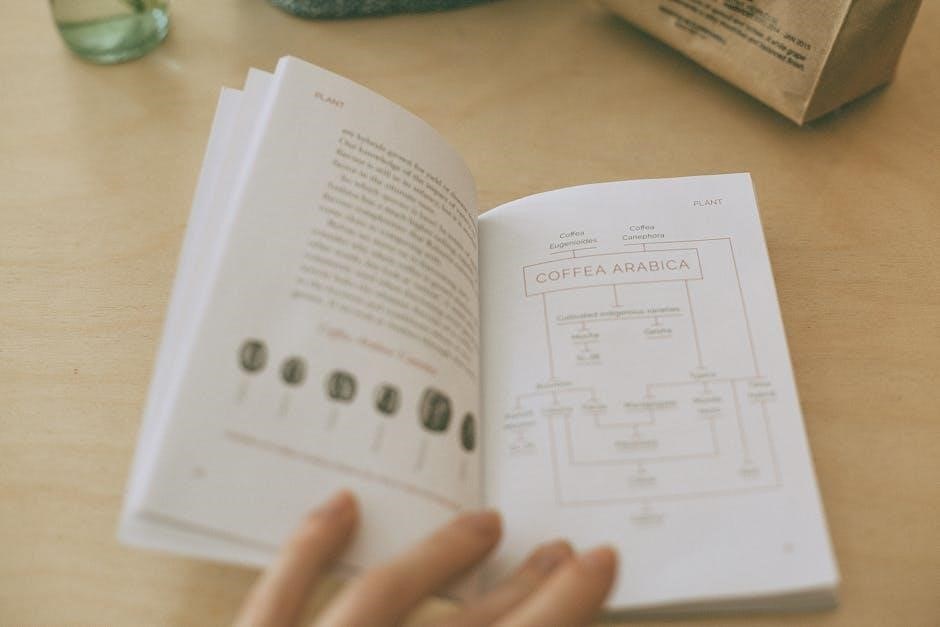
socks size guide
Sock Size Guide: Finding the Perfect Fit
Finding the perfect sock size ensures comfort and optimal performance. This guide provides essential tools for accurate sock selection. Utilize our charts to convert shoe size to sock size. Consider factors like foot length and brand variations for the ideal fit.
Welcome to the world of sock sizing‚ where comfort begins with the perfect fit. Understanding your sock size is crucial for ensuring that your feet are happy and healthy‚ regardless of your activity. Socks that are too small can constrict your feet‚ while those that are too large can bunch up and cause discomfort or blisters.
This comprehensive guide will provide you with all the knowledge you need to navigate the often-confusing world of sock sizes. We’ll explore various sizing charts for men‚ women‚ and children‚ as well as conversion methods between different sizing systems‚ including US‚ UK‚ and EU standards. Learn how to measure your feet accurately and discover essential tips for selecting the right sock size for any occasion.
Whether you’re an athlete seeking performance socks‚ a professional requiring dress socks‚ or simply looking for cozy everyday socks‚ finding the correct size is paramount. We will address frequently asked questions and even delve into specific brand sizing charts.
Understanding Sock Size Measurement
Decoding sock sizes can seem like deciphering a secret code‚ but it’s actually quite straightforward once you understand the basics. Unlike shoe sizes‚ which often vary significantly between brands and regions‚ sock sizes are generally more standardized‚ based primarily on foot length. However‚ it’s essential to recognize that there are different systems in use.
In the US‚ sock size often correlates directly with foot length in inches. This means a sock size labeled “9-11” is designed to fit feet that are between 9 and 11 inches long. Some brands use a more simplified approach‚ indicating sock size based on shoe size ranges. This method requires consulting a conversion chart to determine the appropriate sock size for your shoe size.
European sizing typically uses a numerical system based on foot length in centimeters. Understanding these different measurement systems is crucial when purchasing socks online or from international brands. We’ll delve into specific conversion charts to help you translate between these systems.
Remember that sock sizes are not shoe sizes.
Sock Size Charts: Men‚ Women‚ and Kids
Navigating the world of sock sizes can feel overwhelming‚ especially with variations between genders and age groups. To simplify the process‚ we’ve compiled comprehensive sock size charts for men‚ women‚ and kids. These charts provide a clear mapping between foot length‚ shoe size‚ and corresponding sock sizes.
Our charts consider common sizing systems‚ including US‚ UK‚ and European standards; For men‚ the charts typically correlate shoe size with sock size ranges‚ accounting for the generally larger foot size. Women’s charts follow a similar structure but cater to the smaller average foot size. Kids’ sock size charts are organized by age and shoe size‚ acknowledging the rapid growth during childhood.
It’s important to note that these charts serve as general guidelines. Individual foot shapes and brand-specific sizing variations can influence the ideal fit. When in doubt‚ consider measuring your foot length accurately and comparing it to the chart’s measurements. Also‚ take into account the sock’s material and intended use‚ as thicker socks may require a slightly larger size.
Let’s explore the specific charts.
Men’s Sock Size Chart
Finding the right sock size is crucial for comfort and performance. Our men’s sock size chart simplifies the process‚ correlating US shoe sizes with corresponding sock sizes. This chart is designed to provide a general guideline‚ accounting for the average male foot dimensions. However‚ remember that individual foot shapes and brand-specific sizing can influence the perfect fit.
Typically‚ men’s sock sizes are indicated by a numerical range‚ such as 10-13‚ which corresponds to the foot length in inches. The chart will translate these numerical sock sizes into equivalent US shoe sizes‚ making it easy to find the appropriate match. For instance‚ a men’s shoe size of 9-11 typically aligns with a sock size of 10-13.
When using the chart‚ consider the sock’s material and intended use. Athletic socks might require a snugger fit‚ while thicker wool socks may necessitate a slightly larger size. If you fall between two sizes‚ it’s generally recommended to size up for optimal comfort. Some brands also provide specific measurements in centimeters or inches‚ allowing for even more precise selection.
Let’s see the chart.
Women’s Sock Size Chart
This chart translates US women’s shoe sizes into corresponding sock sizes‚ making it easy to discover the perfect fit. Typically‚ women’s sock sizes are indicated by a numerical range‚ such as 9-11‚ which corresponds to the foot length in inches. The chart translates these numerical sock sizes into equivalent US shoe sizes‚ making it easy to find the appropriate match. For instance‚ a women’s shoe size of 6-8 typically aligns with a sock size of 9-11.
Different brands use different sizing conventions. Use the chart to find the perfect size sock for you. This guide provides general recommendations. If you fall between sizes‚ or if you have particularly wide or narrow feet‚ consider sizing up or down accordingly.
Keep in mind that the material of the sock can also affect the fit. Cotton socks may shrink slightly after washing‚ while synthetic materials may retain their shape better. The intended use of the sock also plays a role. Athletic socks may require a snugger fit for support‚ while casual socks may offer more relaxed comfort.

Refer to the chart below.
Kids’ Sock Size Chart
Finding the right sock size for kids can be tricky‚ as their feet grow quickly! This chart simplifies the process by correlating children’s shoe sizes with appropriate sock sizes. Kids’ sock sizes are often categorized by age ranges or numerical sizes‚ and this chart bridges the gap between these measurements and standard US shoe sizes.
For example‚ a child’s shoe size of 7-10 typically corresponds to a sock size suitable for toddlers‚ while a shoe size of 11-13 may align with a sock size for older children. Keep in mind that these are general guidelines‚ and individual variations may occur.
Always consider the child’s comfort when selecting sock sizes. Socks that are too tight can restrict circulation‚ while socks that are too loose can bunch up and cause discomfort. When in doubt‚ it’s often best to size up‚ as children will eventually grow into the larger size.
Material also plays a role. Opt for soft‚ breathable fabrics like cotton to keep children’s feet dry and comfortable. Check the specific brand sizing charts. The chart below provides a good starting point.
Converting Shoe Size to Sock Size
Converting shoe size to sock size is a crucial step in ensuring a comfortable fit. Sock sizes are not always directly equivalent to shoe sizes‚ often using numerical ranges or general labels like “small‚” “medium‚” and “large.” Understanding this conversion helps avoid purchasing socks that are too tight or too loose.
Most sock manufacturers provide size charts that correlate shoe sizes with their specific sock sizes. These charts typically list shoe size ranges in US‚ UK‚ or European sizes‚ alongside the corresponding sock size. It’s important to consult these charts whenever possible‚ as sizing can vary slightly between brands.
As a general rule‚ sock sizes are based on foot length in inches. Therefore‚ knowing your foot length can be helpful when converting from shoe size. It’s also worth noting that men’s and women’s shoe sizes differ‚ so be sure to use the appropriate chart when converting. If you fall between two sizes‚ it’s generally recommended to size up for a more comfortable fit.
Factors like sock material and intended use can also influence the ideal size. For athletic socks‚ a snug fit may be preferred to prevent slippage‚ while for casual socks‚ a looser fit may be more comfortable.
US‚ UK‚ and EU Sock Size Conversion
Navigating sock sizes across different regions requires understanding the nuances of US‚ UK‚ and EU sizing systems. These systems differ in their numerical scales‚ making direct comparisons challenging without a conversion chart. Accurate conversion ensures a proper fit‚ regardless of where the socks are manufactured.
US sock sizes often correlate directly with foot length in inches‚ while UK sizes start at zero‚ without gender distinctions. EU sizes are based on a different metric altogether‚ requiring careful conversion using established charts; These charts typically list equivalent sizes across all three systems‚ facilitating easy cross-referencing.
When converting‚ it’s crucial to consider that slight variations can occur between brands. Therefore‚ consulting the specific brand’s size chart is always recommended. Additionally‚ remember that men’s and women’s shoe sizes differ in the US system‚ impacting the corresponding sock size conversion.
To convert‚ identify your shoe size in your local system (US‚ UK‚ or EU). Then‚ use a reputable conversion chart to find the corresponding size in the system of the socks you intend to purchase. If your shoe size falls between two sizes on the chart‚ consider sizing up for a more comfortable fit‚ especially for thicker socks or those intended for athletic activities.
Factors Affecting Sock Fit
Achieving the perfect sock fit involves more than just knowing your shoe size. Several factors influence how a sock will ultimately feel on your foot. Understanding these elements helps in selecting socks that provide optimal comfort and performance. Material composition plays a significant role.
Socks made from cotton may shrink after washing‚ impacting their overall fit. Synthetic materials like polyester and nylon offer greater resistance to shrinkage and can affect the sock’s stretch and breathability. Elasticity also varies among different fiber blends‚ influencing how well the sock conforms to the foot.
Sock thickness and construction impact fit. Thicker socks‚ often used for athletic activities or colder weather‚ may require a slightly larger shoe size. The sock’s cuff height‚ compression level‚ and any added features like cushioning or arch support also affect how it fits and feels.
Foot shape and volume are crucial. People with wider feet may find that socks labeled as “one size fits all” are too snug. High arches or bunions can also influence the sock’s comfort and fit. Individual preferences matter.
Some people prefer a tighter fit‚ while others prefer a looser feel. Considering these personal factors‚ along with material‚ thickness‚ and construction‚ ensures a well-fitted‚ comfortable sock.

How to Measure Your Foot for Sock Size
Accurate foot measurement is the foundation of finding the correct sock size. Follow these simple steps to ensure you get the most precise measurement possible. Gather your materials. You’ll need a blank piece of paper larger than your foot‚ a pen or pencil‚ a ruler or measuring tape‚ and a flat‚ hard surface.
Place the paper on the floor and stand on it with your heel against a wall. Ensure your foot is flat and bearing weight evenly. Trace the outline of your foot carefully‚ keeping the pen or pencil vertical. Repeat this process for both feet‚ as foot sizes can vary slightly.
Use the ruler or measuring tape to measure the length of each foot tracing. Measure from the heel’s back edge to the tip of your longest toe. Record the length in both inches and centimeters for accurate comparison with sock size charts.
Compare your measurements to a sock size chart. Most charts will correlate foot length to sock sizes for men‚ women‚ and children. Choose the sock size that corresponds to your longer foot’s measurement. If you fall between sizes‚ it’s generally recommended to size up.
Measure your feet later in the day‚ as they tend to swell slightly as the day progresses. This will help you choose a sock size that remains comfortable even when your feet are at their largest.
Tips for Choosing the Right Sock Size
Selecting the right sock size goes beyond just matching your shoe size; several factors contribute to the perfect fit. Prioritize comfort. A well-fitting sock should feel snug but not constricting. Avoid socks that are too tight‚ as they can restrict circulation. Similarly‚ socks that are too loose can bunch up and cause blisters.
Consider the sock’s material. Different materials have varying degrees of stretch and compression. Athletic socks often have more compression for support. Dress socks may prioritize a sleek fit. Choose materials that suit your activity level and footwear.
Pay attention to the sock’s construction. Look for reinforced heels and toes for added durability. Seamless toes can prevent irritation and blisters‚ especially during prolonged wear. The sock’s cuff should stay in place without digging into your skin.
When in doubt‚ size up. It’s generally better to err on the side of a slightly larger sock than one that is too small. A slightly larger sock can still be comfortable‚ while a too-small sock will always be uncomfortable.

Read customer reviews. Other customers’ experiences can provide valuable insight into a sock’s fit and quality. Pay attention to reviews that mention sizing issues.

Sock Sizing FAQs
Many questions arise when determining the correct sock size. This section addresses frequently asked questions to clarify the process. How do I determine my sock size if I’m between sizes? If you fall between two sizes‚ it’s generally recommended to size up for a more comfortable fit. A slightly larger sock is preferable to one that is too tight.
Are sock sizes the same as shoe sizes? No‚ sock sizes are not directly equivalent to shoe sizes. Sock sizes typically represent the length of your foot in inches. Use a sock size chart to convert your shoe size to the corresponding sock size.
Do men’s and women’s sock sizes differ? Yes‚ men’s and women’s sock sizes are generally different due to variations in foot shape and size. Refer to gender-specific sock size charts for accurate sizing.
How do I measure my foot for sock sizing? To measure your foot‚ place your heel against a wall and measure the distance from the wall to the tip of your longest toe. Use this measurement to consult a sock size chart.
What if the brand does not provide sizing charts? Check customer reviews. They can offer valuable insights into whether the socks run true to size. When in doubt‚ contact the manufacturer directly for sizing guidance.
Caring for Your Socks to Maintain Size
Specific Brand Sizing Charts (e.g.‚ Stance‚ Darn Tough)
While general sock size charts offer a good starting point‚ specific brands often have unique sizing nuances. This section highlights the importance of consulting brand-specific sizing charts for optimal fit.
Stance socks‚ known for their innovative designs and performance features‚ provide detailed size charts that correlate shoe size with their specific sock sizes. These charts often differ from standard sizing‚ so referring to them directly is crucial.
Darn Tough Vermont socks‚ renowned for their durability and lifetime guarantee‚ also offer their own sizing charts. These charts consider the sock’s construction and intended use‚ ensuring a precise fit for hiking‚ running‚ or everyday wear.
When purchasing socks from a particular brand‚ always locate their official sizing chart on their website or product packaging. These charts may include measurements in inches or centimeters‚ corresponding to foot length or shoe size.
Some brands may also offer size finders or fit guides‚ which ask for additional information such as arch height or foot width to further refine the sizing recommendation. Paying attention to these details can significantly improve your sock-buying experience. Remember‚ brand specifics ensure perfect socks.